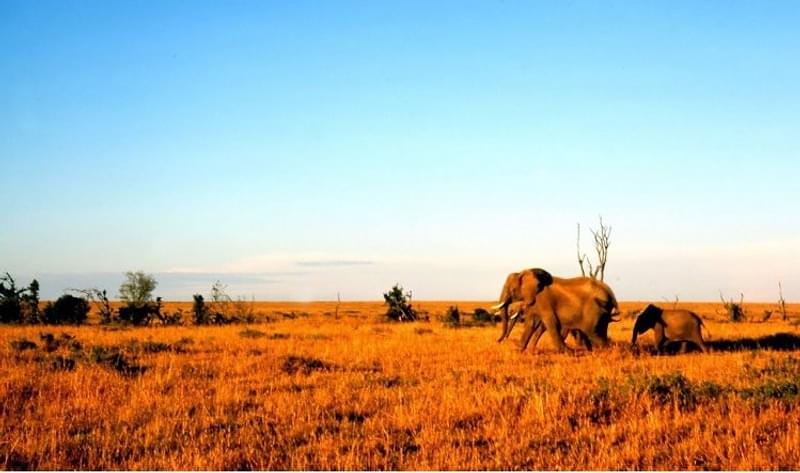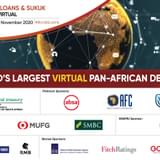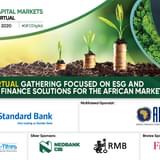The past year has been a particularly challenging one for the Kenyan economy as unseasonably dry weather during the “short rains” season led to food shortages and rising agriculture and energy prices – which put a damper on agricultural and industrial production, and a range of other productive sectors.
In February this year, food prices shot up a record 16.5%, while the number of citizens requiring food aid jumped to 2.7 million. Headline inflation for April stood at 11.48%, its highest level in five years, according to official statistics, and well above the 5-2.5% target range set by the Central Bank of Kenya (CBK).
Coupled with a crippling slowdown in private sector credit growth, economists expect the country to put in roughly 5.0% in GDP growth for 2017. Private sector credit growth has been declining from highs of 21.0% in August 2015 to lows of 4.0% in March 2017 according to the CBK, something analysts at Cytonn Investments Management, a Nairobi-based asset manager and advisory, attribute to a broad flight to government securities and an increase in commercial bank non-performing loans (NPLs).
At the same time, pressure from an interest rate cap brought into force last year means the country’s Tier 1 and 2 lenders have become less willing to lend to entities beyond government and large blue-chip names because they can’t accurately price risk, perpetuating the credit drought and weighing on growth.
The recent downward revisions on the country’s growth forecasts have already forced Kenya to surrender the trophy for East Africa’s largest economy to Ethiopia, one of the region’s largest but more inward-looking economies – a feature that makes its consistent double-digit growth even more impressive.
Trouble in Our Midst
Some of these pressures on the country’s economy have begun to ease. While headline inflation trended upward slightly in April to 11.7%, improving domestic crop yields brought about by climate normalisation through the first quarter look likely to put downward pressure on that figure in the coming months. Economist believe this should also bolster consumer confidence through the second half of the year.
Most observers see the upcoming elections in August as the biggest near-term risk, with what looks likely to be a fairly narrow margin separating the incumbent Uhuru Kenyatta of the Jubilee Party and Raila Odinga and his newly created National Super Alliance (Nasa). There are rumours circulating that whoever emerges as a victor, the government is likely to scrap the controversial interest rate cap, which would help restore private sector credit growth – albeit at higher average borrowing costs.
Against this backdrop, however, trouble is brewing – seemingly unabated. Next year, Kenya will spend more than half of the revenue it collects from taxes to pay down the principle and interest on maturing debt, dwarfing sums spent on education, health, and other critical line items. Spending projections included in the most recent supplementary budget presented to Parliament show the government will need to fork out over KES700bn (approx. US$6.7bn) next year to repay outstanding debt, including the first portion of a Eurobond that falls due next year. That’s a massive jump from the KES446.4bn the government spent in 2016 to pay down its debt.
“Although public debt remains sustainable, margins for manoeuvre are rapidly narrowing,” the World Bank said in its latest note on Kenya, echoing a recent IMF report’s findings.
The US$800mn syndicated loan the country signed with four commercial lenders in March this year brings Kenya’s total stock of debt to KES3.8tn, or close to 53% of GDP – up significantly from 38.2% of debt-to-GDP seen in 2012.
That figure looks set to rise. The government is still mulling whether or not to issue Islamic bonds during the 2017/18 fiscal year, and it already has a number of commercial and concessional loans earmarked for the forthcoming fiscal year – including a KES148bn loan from China Exim Bank for the Nairobi-Naivasha leg of the Standard Gauge Railway, a flagship multibillion dollar infrastructure project largely financed through debt, and KES100bn in loans from the World Bank to finance new road construction.
The Standard Gauge Railway, the largest project in the country’s post-colonial history connecting the Indian Ocean port city of Mombasa and the capital, Nairobi, Naivasha, Kisumu and finally Malaba, is being financed through a 15% equity contribution from the government and KES390bn through a mix of concessional and commercial loans from China and Chinese lenders. Analysts also suspect the government will have to put at least a further KES1.5bn aside to help subsidise the project over the next five years.
“Debt to GDP is worrying, but not nearly as much as debt servicing costs to revenue,” explained Johnson Nderi, Head, Corporate Finance Advisory at ABC Capital.
Analysts have also grown more concerned about a recurring and widening fiscal deficit. The budget deficit for the 2016/17 fiscal year is projected to hit 9.6% of GDP, up significantly from 4.5% in 2011. The Treasury – which has also voiced concerns about the country’s debt sustainability – is targeting a deficit of 5.2% of GDP for the 2018/19 fiscal year, and 4% in the medium term, targets one economist who spoke with Bonds & Loans characterised as “hopelessly unrealistic” without any significant shift in the tax regime or reduction in future spending commitments.
Part of the problem is that tax collection in the country is notoriously substandard, with the treasury having regularly recorded shortfalls over the past three years. To counter this, the government is looking to broaden its tax base, including a planned doubling of non-pay-as-you-earn (non-PAYE) tax payers through the 2017/18 fiscal year, from 1.6 million to 4 million.
Kenya’s Economic Model is Not Sustainable
A big part of the problem hits at the heart of Kenya’s economic model, which relies heavily on the government purse to finance expensive infrastructure. Much of the equity historically used for development spending was sourced from the government’s own balance sheet in combination with concessional loans. But some economists have argued that the percentage of actual ‘equity’ placed into these projects has diminished over the past 7 years as the government boosted borrowing, only to be replaced with debt.
At the same time, commercial loans have actually increased as a percentage of the government’s total borrowing, a trend that is broadly consistent across East Africa according to Jibran Qureishi, a Nairobi-based economist at Stanbic. As the region’s governments eschew cheaper concessional funding, usually contingent on the implementation of reforms, for more expensive foreign capital, the higher relative cost of borrowing creates an even longer delay between the infrastructure investment and realisation of those benefits.
“If you strip out non-recurrent government spending on infrastructure, GPD is drastically reduced, and if you look at debt servicing costs as a percentage of exports, the trend is even more concerning,” Qureishi said. “Ultimately, we will need to boost dollar receivables in order to pay for all of the hard currency loans and bonds – but that hasn’t happened yet, and if the trend continues it won’t be sustainable.”
“The government has become so reliant on using external capital to finance expensive infrastructure projects, whose multiplier effect is still up in the air, and has not done enough to boost domestic savings, or form a strong exports strategy. That’s a toxic combination. It’s imperative for economies like Kenya to ensure that infrastructure is going to boost employment and productivity over the medium to long term, which means they will need to be much more selective about which projects they undertake.”
This, admittedly, puts Kenya in a tough spot. New infrastructure is necessary to ensure the country continues transitioning into an industrialised, middle-income country. But the government’s fiscal headroom to finance the kind of projects that beget productivity gains in key sectors like agriculture and tourism is narrowing.
Without further fiscal consolidation, unlikely to be a popular theme as the country heads into elections later this summer, or a functional strategy to boost domestic savings, Kenya will continue to struggle. Unless something changes, one of East Africa’s leading growth engines may be headed for a breakdown.









